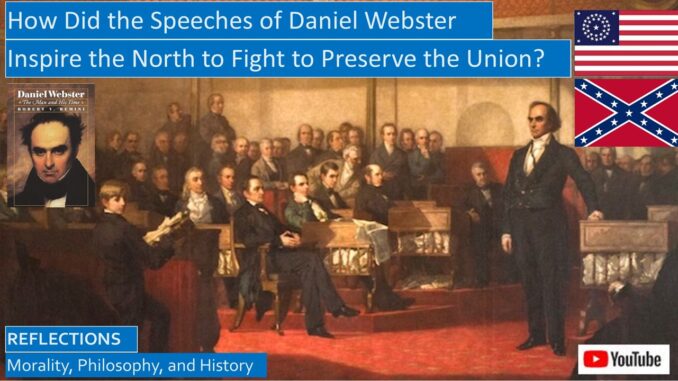
Today we will reflect on this question: How Did the Speeches of Daniel Webster Inspire the North to Fight To Preserve the Union?
Why were Northern soldiers so eager to fight for what sounds to us as an abstract cause, the preservation of the Union?
Why were the leaders of South Carolina so eager to secede from the Union? Were they repeating history?
How did the efforts of Andrew Jackson, Daniel Webster, and Henry Clay preserve the Union for three decades?
BACKGROUND HISTORY
I joined an online discussion with Professor Gary Gallagher, who had recorded a series of Civil War lectures for the Teaching Company, now Wondrium. Although it was easy for me to understand how Southern soldiers were eager to fight the Civil War to preserve slavery, I was puzzled: Why were Northern soldiers so eager to fight for such an abstract cause as preserving the Union?
I also asked an easier question: Did many informed citizens during that time fear that if the Civil War was not fought and the Confederacy were left alone, would there eventually be armed conflict over whether the Western territories would join the Union or the Confederacy? An example of that violence was Bleeding Kansas. His answer, based on his combing through newspaper accounts before and during the Civil War, was that this was indeed a concern.
Why were Northern soldiers so eager to fight to preserve the Union? To understand this, you need to study American history three decades before the Civil War, when South Carolina first threatened to secede from the Union over the issue of high tariffs; although, at that time, the institution of slavery was also zealously guarded by the South. But to really understand the fervor with which many in the North fought to preserve the Union, we need to dig deeper into the emotional speeches delivered in response to these crises from the 1830’s, which we will reflect on today. But before we can adequately reflect on these events, we first need to provide some background information.
Why Were Union Soldiers in the Civil War Willing to Fight to Preserve the Union?
https://seekingvirtueandwisdom.com/why-were-union-soldiers-in-the-civil-war-willing-to-fight-to-preserve-the-union/
https://youtu.be/0aak9Mtt0eI
The 1820 Presidential Election was held during the Era of Good Feelings. The Democratic-Republican Party nominated James Monroe for President. He was the last of the Founding Fathers to serve as President and won all but one of the votes of the Electoral College. The New England Federalist Party fielded a candidate for Vice-President but not for President, since the party was increasingly unpopular due to New England’s sympathy with the British before the War of 1812, where English sailors plundered the White House and Congressional buildings. Soon after the Federalist Party disintegrated.[1]
The Era of Good Feelings ended after the 1824 Presidential Elections when various factions within the Democratic-Republican Party nominated four candidates for President. Andrew Jackson won a plurality, but not a majority, of both the popular votes and the Electoral College votes. John Quincy Adams, son of the Founding Father and second President John Adams, came in second, while Henry Clay came in fourth. Since no candidate won a majority of the Electoral College votes, the Constitution required that the Presidency be determined in the House of Representatives, with one vote for each state. Since many of the Northeastern states are small, their votes counted more heavily, and they elected John Quincy Adams as the next President.
After John Quincy Adams appointed Henry Clay as Secretary of State, the Jacksonian faction cried foul, accusing them of a corrupt bargain.[2] Eventually, John Quincy Adams, Henry Clay, Daniel Webster, and former Federalists congealed around the National Republican Party, which in future decades morphed into the Whig Party, then the Free Soil Party, and finally the Republican Party shortly before the Civil War.
This doomed the Presidency of John Quincy Adams, and when he ran for reelection in 1828, Andrew Jackson beat him handily in both the popular vote and the Electoral College vote. This also ended the Era of Good Feelings, afterwards partisan emotions ran high, contrary to the hopeful vision of George Washington and the Founding Fathers, who saw partisanship as destructively divisive. Andrew Jackson was from Tennessee while John C Calhoun, his Vice-Presidential running mate, was from South Carolina.
EVOLUTION OF US TWO-PARTY POLITICS
This partisanship also began to show the strains between the slave-holding South and the Free Soil North. The Democratic-Republican Party split into the Democratic Party and the National Republican Party. Andrew Jackson was an agrarian slave-holding Southerner, while the more business-friendly National Republican Party, which was active from 1824 to 1834, was home to the political giants Daniel Webster and Henry Clay.[3] When the National Republican Party dissolved, most party members joined the Whig Party, which was a national party active from 1833 to 1856, when disputes over slavery broke up the party.
Although the abolitionists actively opposed slavery from the 1830’s, many Northerners were uncomfortable with many of their ideas, the belief that the black man was equal to the white man was a radical belief at that time. Rather, since there were no large plantations in the North, Northerners opposed the unfair competition that small farmers and businessmen faced from the free labor of slaves. This unease gave birth to the Northern Free Soil Party, active from 1848 to 1854.[4] Then former Whigs and Free Soil Party members migrated to the Republican Party in 1854, which was mostly a Northern party. The Democratic Party remained a national party, though it was split during the Civil War. The Democratic General George McClellan ran as a peace candidate against Lincoln during the Civil War.[5]
PASSIONATELY PRESERVING THE UNION
The National Republicans and future Whigs Daniel Webster and Henry Clay were famous for their passionate pleas for preserving the Union, this was pursued with evangelical fervor in their speeches. Although there were Democrats who favored seceding from the Union if their states disagreed with national policy, President Andrew Jackson was just as fervent in preserving the Union.
Although slavery was becoming a sectional controversy dividing North and South, the major issue dividing Northern industrial interests and Southern agrarian interests was the national tariff, which was a major revenue source for the federal government in 1830. Northern industrialists favored a high tariff to protect the market for the smaller factories of the north from being undersold by the more efficient and large British factories. Southern plantation owners favored a lower tariff so they could purchase supplies at a lower price, which enabled them to export cotton to Britain at a lower price.
A national crisis was provoked in 1830 when South Carolina threatened to nullify, or resist, the collection of a new higher national tariff. Three decades later, the South Carolina militia opened fire on Fort Sumter, an island federal fort in the harbor of Charleston, in response to the election of Abraham Lincoln to the Presidency, sparking the Civil War.[6] Then, as now, many in the North were resentful that the South would not respect the results of a fair and free Presidential election.
Vice-President John Calhoun, who was from South Carolina, was provoked into supporting the doctrine of Nullification by the passage of the higher Tariff of Abominations, as it was called. Our Webster biographer, Robert Remini, wrote that “Calhoun argued the constitutional right of a state to nullify federal legislation within its borders whenever such legislation violated its rights or sovereignty.” This states’ Rights attitude persists to the current day. “If the central government used force against the state to execute its laws, then the state could rightfully secede from the Union.”
This controversy damaged Calhoun’s standing with Jackson, who was more than willing to call his bluff and send federal troops into South Carolina to enforce the tariff, to preserve the Union. But later compromises crafted by Henry Clay would defuse the political situation.
In addition to his duties as a US Senator, Daniel Webster also represented Northern industrial interests in their disputes before the Supreme Court. Remini notes that “he had already acquired a reputation as the ‘Great Expounder and Defender of the Constitution’ who virtually provided the Supreme Court with all the basic arguments for its major decisions.” Excerpts from Daniel Webster’s Senate Debates on Preserving the Union would be memorized by schoolchildren for many decades, even into the twentieth century.
THE WEBSTER-HAYNE DEBATE IN THE SENATE
There were other divisive regional issues, one was a proposal to limit the sale of Western lands, another key source of federal revenue. This benefited the West at the expense of Eastern factory owners, who lost low-paid employees who migrated west to buy land and farm.
The young Senator Robert Hayne rose to speak on a bill limiting Western land sales, but he addressed also the tariff issue dividing the North and South. “The very life of our system is the independence of the states and there is no evil more to be deprecated than the consolidation of this Government.” Remini notes that “Hayne wanted the government to have no permanent sources of income as provided by the tariff and sale of public lands. It only ‘consolidates’ the government and corrupts the people.”
In a subsequent debate, Daniel Webster spit out the word: “Consolidation! That perpetual cry both terror and delusion: consolidation!” Why would consolidation be bad, what is wrong with encouraging “the people of the states to hold together?” Although he said that he did not seek to increase the powers of the federal government, Webster emphasized that “I confess I rejoice in whatever strengthens the bonds that unite us, and encourage the hope that our Union may be perpetual.” This Union “is essential to the prosperity and safety of the states. I am a Unionist, and, in this sense, a national republican.”
Webster first pointed out that “New England had always opposed the tariff.” Then he spoke of the issue that would, in time, divide the Union: SLAVERY. He pointed out that the Northwest Ordinance of 1787, which created the Northwest Territory which spanned the current states from Ohio to Minnesota, forbade slavery in the territory. He looked forward to a debate where he could “reassert, in even stronger terms, the supremacy of the federal Union.”
Hayne took the bait, but “he weakened and seriously damaged his argument by attempting to demonstrate the supposed beneficial influences.” Then he fell completely into Webster’s trap, going beyond Calhoun’s assertion that the “states would be a check on the unlimited power of the central government.” Hayne claimed that the “states and central authority acted as equals in the Constitution. The states’ rights argument claimed that the states, and only the states, created the national government, that the central government is the creature of the states.”
When Hayne argued that “slavery, in the abstract, is no evil,” Webster countered that “the abolition of slavery must come from the slaveholding states themselves. ‘It is their affair, not mine,’ he proclaimed. Neither the central government nor Congress had any authority to emancipate the slaves.” This Northern sentiment would only shift amidst the bloody battles and thousands of slaves crossing the Union lines during the Civil War.
Remini recounts Webster’s argument: “The people declared that the Constitution shall be the supreme law. The states are sovereign as long as they do not disturb the supreme law.” “The South Carolina doctrine, as Webster called nullification, would grant each of the twenty-four states the authority to decide which laws are legal and constitutional and which are not.”
Webster asked, “Does this not approach absurdity?” Either the laws of the central government are beyond the control of the states or we have “no constitution of general government, and are thrust back again to the Articles of Confederation.” These Articles preceded the Constitution, they created a federal government with no powers of taxation, reliant on contributions by the states for funding, a weak President, no powers to regulate commerce, and a Confederation where each state had one vote.
Who interprets the will of the people? Do the states interpret the will of the people? No, answered Webster, “the people left it to the central government itself.” Who has the last say? “The federal judicial power shall extend to all cases arising under the Constitution and laws of the United States.” “I maintain, that between the submission to the decision of the constituted tribunals, and revolution, or disunion, there is no middle ground; there is no ambiguous condition between half-allegiance and half-rebellion.”
Remini recounts: “Webster reminded his listeners of the prosperity and honor achieved by the nation through the ‘preservation of our Federal Union.’ “It is to that Union we owe our safety at home and dignity abroad. It is that Union that makes us most proud of our country. Every year brings new evidence of its blessings.” Webster proclaimed, “The Union has been to us all a copious fountain of national, social, and personal happiness.”
Then Webster spoke his long-remembered conclusion: “While the Union lasts, we have high, exciting, gratifying prospects spread out before us, for us and our children.” “When my eyes shall be turned to behold for the last time the sun in heaven, may I NOT see him shining on the shining on the broken and dishonored fragments of a once glorious Union; on States dissevered, discordant, belligerent; on a land rent with civil feuds, or drenched, it may be, in fraternal blood!”
Webster continues: Let us not say, “Liberty first and union afterwards;” “but everywhere, spread all over in characters of living light, blazing on all its ample fields, as they float over the sea and over the land, and in every wind under the whole heavens, that other sentiment, dear to every true American heart: ‘Liberty and Union, now and forever, one and inseparable!’”[7]
Daniel Webster’s speech, recited by generations of schoolboys, formed the core of the quasi-religious attitude that inspired many a Northern soldier to volunteer to invade the South, to fight to preserve the Union, with fraternal blood.
SOUTH CAROLINA NULLIFICATION AND POSSIBLE SECESSION
South Carolina convened a state convention to discuss the tariff laws of 1828 and 1832, which met in late November. The Convention overwhelmingly passed an Ordinance of Nullification declaring that these tariffs were null, void, and not binding on South Carolina, and that if force were applied to enforce them, South Carolina would secede from the Union. Then Hayne resigned from the Senate, Calhoun resigned from the Vice-Presidency, and then the South Carolina Legislature appointed Calhoun to the Senate, as Senators were not elected at this time, and Hayne was elected Governor.
As a general, Andrew Jackson had defeated the British at New Orleans in the War of 1812, making him a national hero immediately, and his toughness earned him the nickname “Old Hickory.” As expected, Jackson responded immediately to this challenge, issuing his Proclamation to the people of South Carolina, cautioning them of the “dreadful consequences” should the state follow through on this threat. He proclaimed, “Disunion by armed force is treason. Are you ready to incur its guilt?” But since he was both a Southerner and a slaveholder, Jackson was also conciliatory, offering to lower the tariffs.
Webster quickly affirmed this message. “The principles contained in Jackson’s Proclamation are such as I entirely approve. I esteem them to be the true principles of the Constitution.” Nullification is nothing more than “resistance to law by force, is is secession by force: IT IS CIVIL WAR!” “If the government, on this first trial, should not be able to keep all the States in their proper places, from that moment the whole Union is virtually dissolved.”
Abraham Lincoln listened to this speech, as did many Americans, and Remini, our historian, says they learned these lessons:
- “First, the President must execute the laws. In this he has no choice. Therefore, if a state violates the law, the President must see to it that the law is enforced, employing ‘lawful means,’ including the use of armed force.
- Second, the notion that one state may secede from the Union is absurd. Once the Union is broken, it will break again and again, leaving a fragmented country with various governments warring with one another and all subject to the dastardly intrigues of foreign powers. The Union must be preserved, as Jackson had said, and rebellion put down by whatever means necessary.”
Meanwhile, compromises were sought. Jackson proposed that tariffs be reduced fifty percent to their 1816 level. Henry Clay proposed that tariffs be gradually reduced over ten years until they were eliminated. Webster opposed reducing the tariffs.
Andrew Jackson sent his Force Bill to Congress for their approval, authorizing the President to close any port necessary, tweaking the laws to permit the jailing of nullifiers, protect US property, and strengthening the 1792 legislation that gave the “President the power to call out the militia and use federal ships and troops. But force would not be used unless South Carolina initiated it.”
In his first major speech in the Senate, Calhoun proclaimed that the Force Bill was a “Bloody Bill, a War Bill,” “and an unconstitutional declaration of war against a sovereign state.” Calhoun sneered, “Does any man in his senses believe that the Union can be preserved by force?” “No, no. You cannot keep the States united in their constitutional and federal bonds by force.” Calhoun concluded that the present contest is a “contest between power and liberty,” “a contest in which the weaker section, with its peculiar labor,” referring to slavery, “has at stake all that can be dear to freeman.”
Remini summarizes the opposing arguments by Daniel Webster:
- “The Constitution is” “founded by the people, creating direct relations between itself and the people.”
- “No state can dissolve these relations, and therefore secession is impossible without revolution.”
- “The supreme law consists of the Constitution and the acts of Congress to be interpreted by Congress or the Supreme Court.”
- “Nullification is unconstitutional, a usurpation of powers of the general government and the rights of other states and therefore revolutionary.”
“The people of the United States,” Webster declared, “are one people. They are one in making war and one in making peace; they are one in regulating commerce, and one in laying duties of impost. The very end and purpose of the Constitution was to make them one people in these particulars.”
Webster continues, “The majority MUST govern. In matters of common concern, the judgment of a majority MUST stand as the judgment of the whole.” “To do otherwise strikes at the very heart of liberty.”
Our historian Remini writes, “The Senate passed the Force Bill by a vote of thirty-two to one. All the nullifiers left the chamber during the voting.” Henry Clay proposed his compromise tariff,” where they “would be slowly reduced over ten years until they stood at a uniform twenty percent.” “During this ten-year truce period,” the tariff would not be adjusted further.
This Compromise Tariff passed Congress with comfortable margins. Perhaps Daniel Webster was like JFK, great at giving speeches, while Henry Clay was like LBJ, great at passing legislation. Remini recounts, “South Carolina repealed its Ordinance of Nullification but, to save face, or maintain its defiance, nullified the Force Bill.”
Everyone knew this did not end the struggle to preserve the Union. Webster knew that “the question of paramount importance in our affairs is likely to be, for some time to come, the Preservation of the Union, or its Dissolution; and now power can decide this question, but that of the People themselves.”[8]
South Carolina not only set bad precedent, but she had also enacted a state law that stated that state militia could resist federal forces sent in to enforce the laws passed by Congress under the Constitution. Thus, you could argue that the Civil War did not start in 1864, that it really started in the 1830’s.
1860 PRESIDENTIAL ELECTION AND FORT SUMTER
The Democratic Party split into a Northern and Southern wing over the issue of whether slavery could be extended into the western territories. The Northern Democrat Stephen Douglas bravely campaigned in both the North and the South, braving hostile Southern crowds, but he won the least votes of all the candidates. The candidate for the short-lived Constitutional Union Party, comprised mostly of former Southern Whigs, won the votes of several border states. And Abraham Lincoln, running for the Republican Party, won the majority of the electoral votes in Northern and Western states, though he only won forty percent of the popular vote. However, the Southern wing of the Democratic Party won only eighteen percent of the popular vote.[9] Abraham Lincoln would be inaugurated in March 1865.
Although Abraham Lincoln ran on not extending slavery in the territories, promising as did Daniel Webster several decades before not to disturb slavery in the Southern states, once he was elected many Southern states began considering seceding from the Union. South Carolina was the first to secede, of course, and demanded that the outgoing President Buchanan, who favored the South, abandon Fort Sumter, but he did nothing. In April 1865 Abraham Lincoln attempted to resupply Fort Sumter with food and non-military supplies. The Confederates opened fire on Fort Sumter, and the garrison, outgunned, surrendered the next day. The Civil War had begun.[10]
The views Abraham Lincoln expressed while campaigning and as President were not news to Americans, he was only repeating much of what Daniel Webster had shouted in his soaring Senatorial debates delivered during the Nullification crisis.
Our Yale Lecture Notes also examine how slavery and the abolitionist movement were also causes of the Civil War, and how slaves helped the North win the Civil War to Preserve the Union.
American Slavery and the Abolitionists: Yale Lecture Notes
http://www.seekingvirtueandwisdom.com/american-slavery-and-the-abolitionists-yale-lecture-notes/
https://youtu.be/kmLg8CDjOOY
Stories of How Slaves Helped the Union Win the Civil War: Yale Lecture Notes
http://www.seekingvirtueandwisdom.com/stories-of-how-slaves-helped-the-union-win-the-civil-war-yale-lecture-notes/
https://youtu.be/89ulb20cy8Q
We also have an enjoyable video on the Civil War as seen through paintings.
Civil War Struggle Through Paintings
https://wp.me/pachSU-E2
DISCUSSING THE SOURCES
Professor Gallagher’s book on the Union War spent too much time debating with his fellow professors from recent scholarly conferences, and not enough time reviewing the relevant history of Daniel Webster, Henry Clay, and Andrew Jackson in the 1830’s. We drew most of our discussion from this readable biography of Daniel Webster by Robert Remini, and we look forward to reflecting on the remainder of Webster’s biographies in future reflections. We will also reflect on the biographies of the other giant of these times, the Great Compromiser, whose compromises helped preserve the Union, Henry Clay.
We also highly recommend Professor Gallagher’s lectures on both the battles and the causes of the Civil War.
[1] https://en.wikipedia.org/wiki/1820_United_States_presidential_election
[2] https://en.wikipedia.org/wiki/1824_United_States_presidential_election
[3] https://en.wikipedia.org/wiki/National_Republican_Party
[4] https://en.wikipedia.org/wiki/Free_Soil_Party
[5] https://en.wikipedia.org/wiki/History_of_the_Republican_Party_(United_States)
[6] https://en.wikipedia.org/wiki/Fort_Sumter
[7] Robert Remini, Daniel Webster, The Man and His Time (New York: WW Norton & Company, 1997), the Webster Hayne Debate, pp. 314-331 and https://en.wikipedia.org/wiki/Northwest_Ordinance and https://en.wikipedia.org/wiki/Articles_of_Confederation
[8] Robert Remini, Daniel Webster, The Man and His Time, Nullification, pp. 372-387.
[9] https://en.wikipedia.org/wiki/1860_United_States_presidential_election and https://en.wikipedia.org/wiki/Constitutional_Union_Party_(United_States)

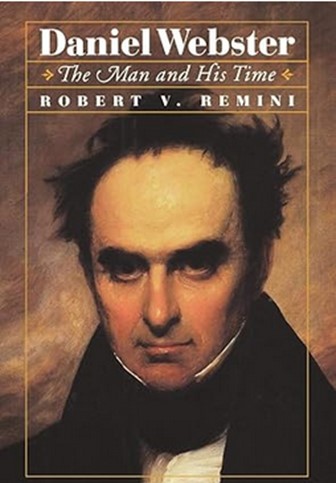
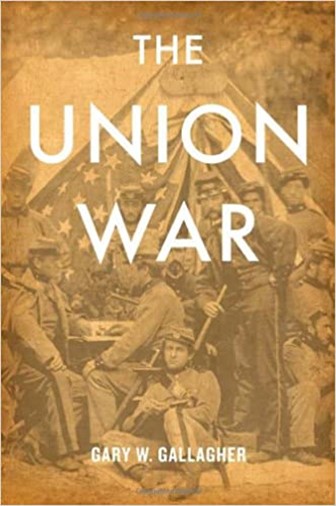
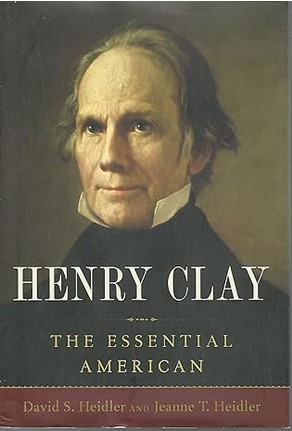
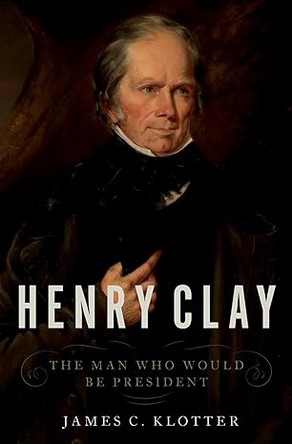


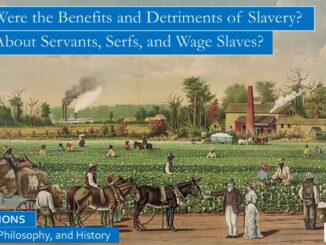

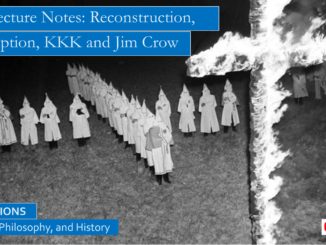
1 Trackback / Pingback